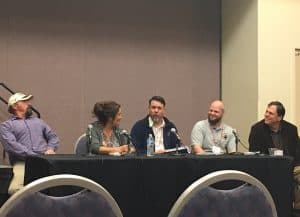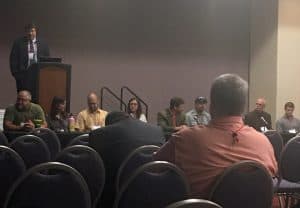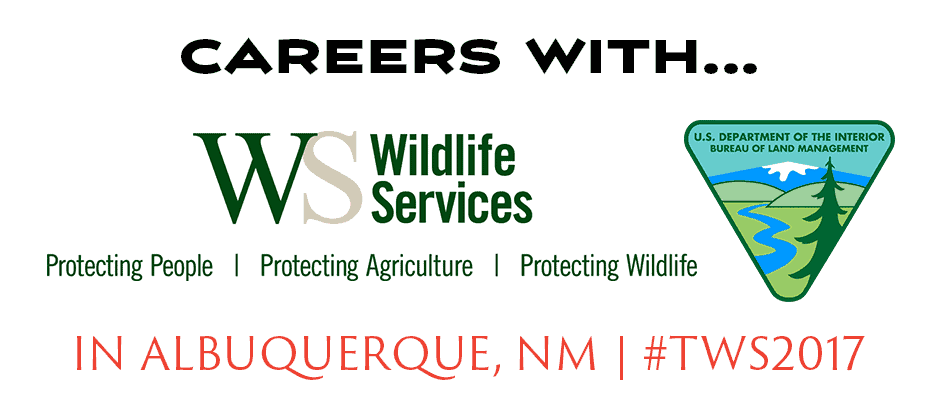Share this article
Students receive career advice from agency experts
There are many agencies that hire wildlife biologists for a variety of different positions, but how do students get their foot in the door at these agencies?
During two sessions, Careers with the Bureau of Land Management and Careers with USDA Wildlife Services, student attendees received advice from people at all stages of their career within these agencies and got the opportunity to personally ask them questions about their positions and advice on landing jobs in the agencies.
 The first “Careers With” event featured a panel of individuals working with the Bureau of Land Management, The Wildlife Society’s most recent premier partner. The BLM manages almost 250 million acres of public lands, mostly in the West, but it employs just one wildlife biologist per million acres — an area the size of Rhode Island or Glacier National Park.
The first “Careers With” event featured a panel of individuals working with the Bureau of Land Management, The Wildlife Society’s most recent premier partner. The BLM manages almost 250 million acres of public lands, mostly in the West, but it employs just one wildlife biologist per million acres — an area the size of Rhode Island or Glacier National Park.
“It was quite an education coming out of college where they taught you to manage for individual species, but they never taught you there would be conflicting uses on lands,” said John Sherman, wildlife program lead for BLM in New Mexico.
Pamela Herrera-Olivias said that as a mother of two, she appreciated the flexibility offered to her by the BLM.
Panelists urged the attendees to be flexible, too, in what jobs they take on and where they plan to live.
Jeff Walsh, a senior wildlife biologist in the BLM’s Washington office, who has spent almost 30 years with BLM, stressed the importance of partnerships and friendships. “With very little staff and very little money, we meet and partner up to make mutually beneficial projects happen on the ground,” he said.
The BLM team also shared what a day in the life of a wildlife biologist is for them. It’s a lot about wearing multiple hats and preparing for future projects, they said. They also provided advice to students regarding getting their foot in the door.
“Be creative in how you approach making yourself known,” Sherman said.
Wildlife Services had a wide range of employees, from interns to seasoned professionals, offering their insight and advice to students.
Unlike most federal agencies, much of Wildlife Service’s funding comes from others that pay them to assist with their work, said Steve Kendrot, a wildlife biologist with Wildlife Services.
Speakers stressed getting involved in the agencies, whether volunteering or interning, early on.
 “As you’re in school now, get involved in internships,” said Brian Archuleta, the district supervisor of the southeast New Mexico branch of the USDA. “It delayed my graduation, but it guaranteed me a job when I got out of college.”
“As you’re in school now, get involved in internships,” said Brian Archuleta, the district supervisor of the southeast New Mexico branch of the USDA. “It delayed my graduation, but it guaranteed me a job when I got out of college.”
Erin Harper, who has just stared her career with the Wildlife Services National Wildlife Research Center, shared with students how she landed her position. At a conference, she heard a presentation on wild pigs and human dimensions, she said. She reached out by email and got funding for her graduate research.
“When you’re at conferences, don’t be afraid to go up to and talk to people,” she said. “I got very lucky. They may not have something right now, but they may have something in the future.”
Panelists also stressed the importance of people skills, even for biologists who work with wildlife.
“If you can’t communicate well with the public or stakeholders, it’s really going to make it an uphill challenge,” Archuleta said.








